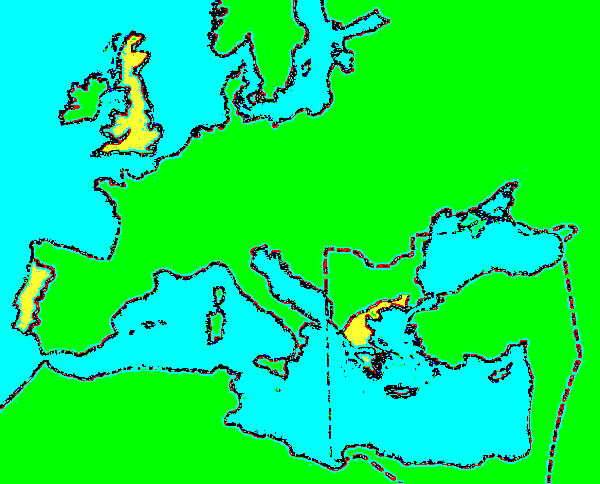5th, 6th, 7th and 8th centuries: The Earlier Byzantine Empire and Migration in Europe |

5th, 6th, 7th and 8th centuries: The Earlier Byzantine Empire and Migration in Europe |

In the 5th and 6th centuries in Western Europe the political control of the former Roman Empire largely fell to barbarian invaders. The crisis of the Classical world reached its height in the 5th century, with all the great civilisations (Roman Europe, Persia, India, China) under pressure from loosely-confederated armies of pastoral nomads pushing south and west. These Mongoloid tribes strained the resources of the states exposed to their attacks and unsettled the agricultural tribes through whose territories they moved, unleashing secondary migrations.
By the end of this period political control of western Europe was largely in the hands of Germanic Slavonic dynasties, with independent kingdoms taking shape. The most important of these, the Frankish kingdom, began in the 5th century, but reached its peak with the reign of Charlemagne in the 8th century. Here as elsewhere the fact that the populace was descended from Romanised natives, and the desire of the rulers to emulate Rome, gave Western Europe a decidedly Latin stamp.
In the eastern Mediterranean meanwhile, the Byzantine monarchy kept up Roman institutions and while continuing to use Latin in its courts, became increasingly Greek speaking, preserving and transmitting Greek culture to the modern world.
By the end of the 6th century, much of the area of the old Roman Empire - Mediterranean Europe and Africa, north-west Europe and Britain and the Near East - were largely Christian. However in the 7th and 8th centuries the expansion of Islam ousted Christianity from much of the Near East, Africa and Spain, and in 711 AD, Portugal. The Arabs were indebted to Greek culture for their philosophy, medicine, mathematics and science, but with their conquest of Palestine and North Africa, the Mediterranean world was effectively split into two halves on the basis of religion.
© 1998 Oxfordshire Museum Service, Setúbal Museums and the Benaki Museum